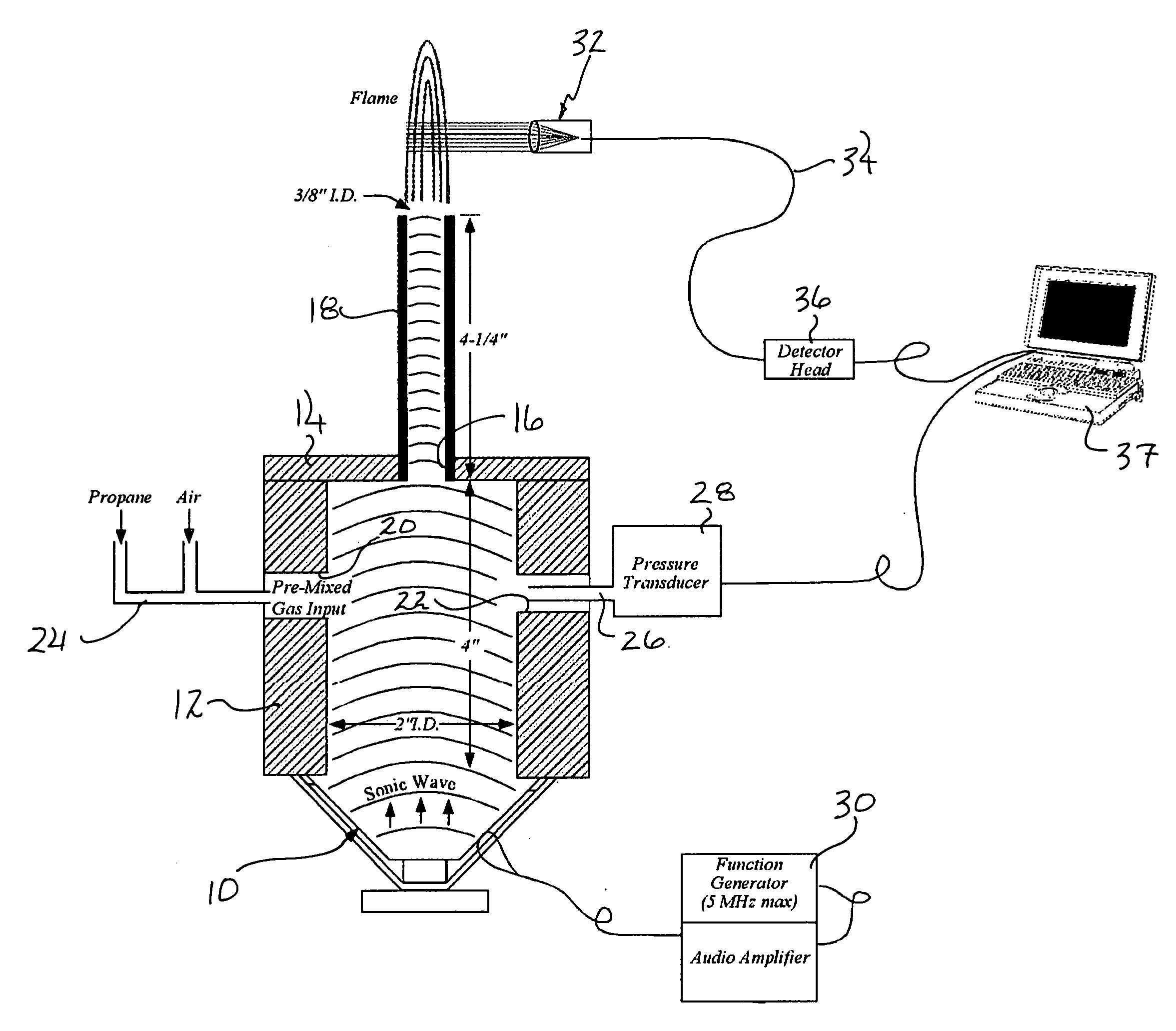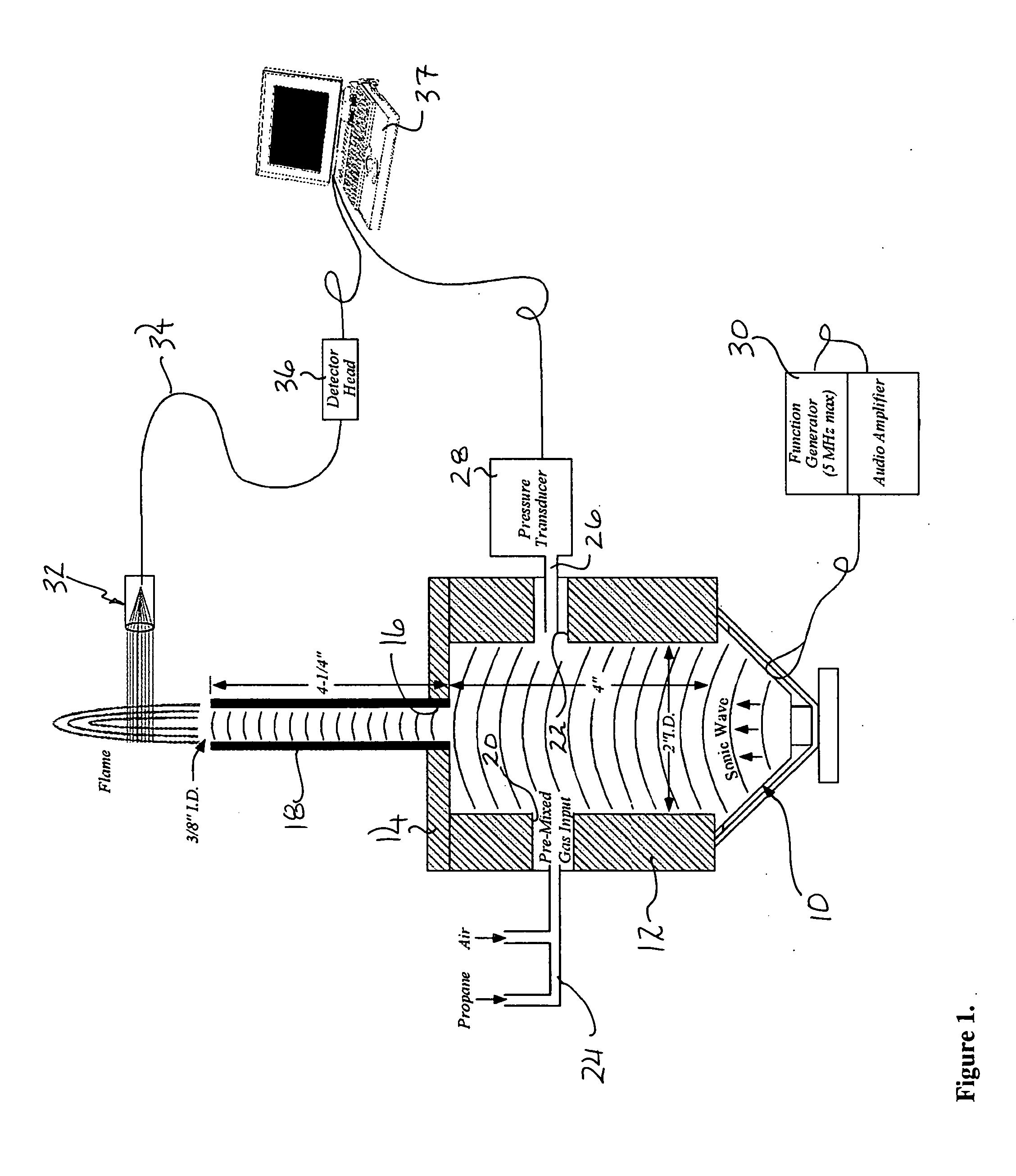Method and apparatus for monitoring combustion instability and other performance deviations in turbine engines and like combustion systems
- Summary
- Abstract
- Description
- Claims
- Application Information
AI Technical Summary
Benefits of technology
Problems solved by technology
Method used
Image
Examples
Embodiment Construction
[0036] Turning now in detail to FIG. 1 of the drawings, therein illustrated is a simple burner apparatus that was constructed as a laboratory unit to test and demonstrate the concept of the invention. A polypropylene speaker 10 (8 Watt, 4 Ohm, of waterproof design) is sealed to the bottom of a 2″ I.D. aluminum cylinder 12. Sealed to the top of the cylinder 12 is a flat plate 14 having a tapped center hole 16 in which is secured a ⅜″ I.D. steel pipe 18. The aluminum cylinder 12 has tapped holes 20, 22 for a gas input manifold 24 and the conduit 26 of a pressure transducer 28, respectively.
[0037] A lean propane / air mixture was fed into the aluminum cylinder 12 to flow out of the steel pipe 18. The speaker 10, with attached amplifier and function generator 30, permits precise pressure oscillations to be imposed upon the gas flow. The pressure transducer 28 (Omega PX213-030A5V) is an absolute gauge (0-30 PSIA) with a 1-millisecond response time, which is fast enough to detect acoustic ...
PUM
 Login to View More
Login to View More Abstract
Description
Claims
Application Information
 Login to View More
Login to View More - R&D
- Intellectual Property
- Life Sciences
- Materials
- Tech Scout
- Unparalleled Data Quality
- Higher Quality Content
- 60% Fewer Hallucinations
Browse by: Latest US Patents, China's latest patents, Technical Efficacy Thesaurus, Application Domain, Technology Topic, Popular Technical Reports.
© 2025 PatSnap. All rights reserved.Legal|Privacy policy|Modern Slavery Act Transparency Statement|Sitemap|About US| Contact US: help@patsnap.com



